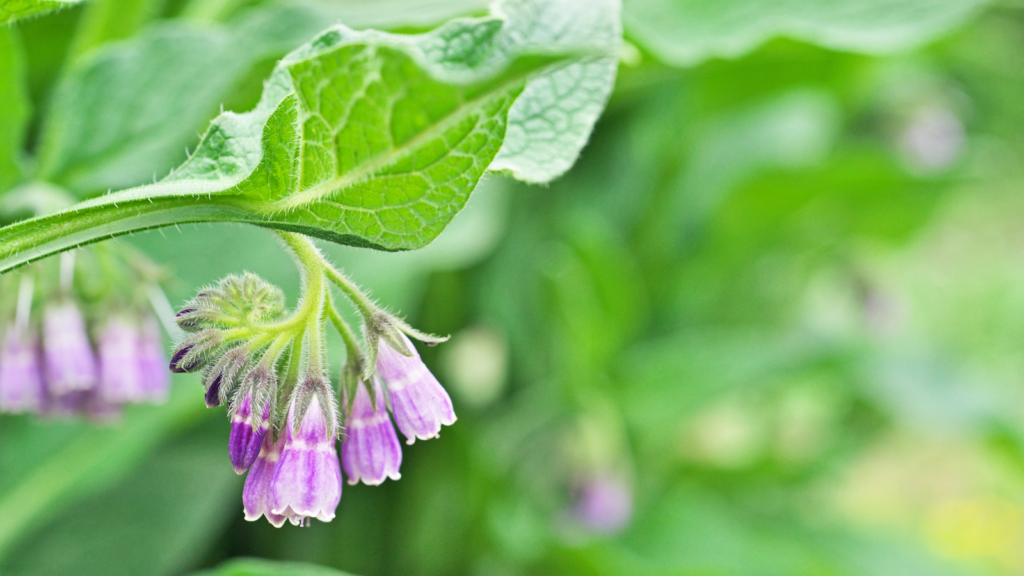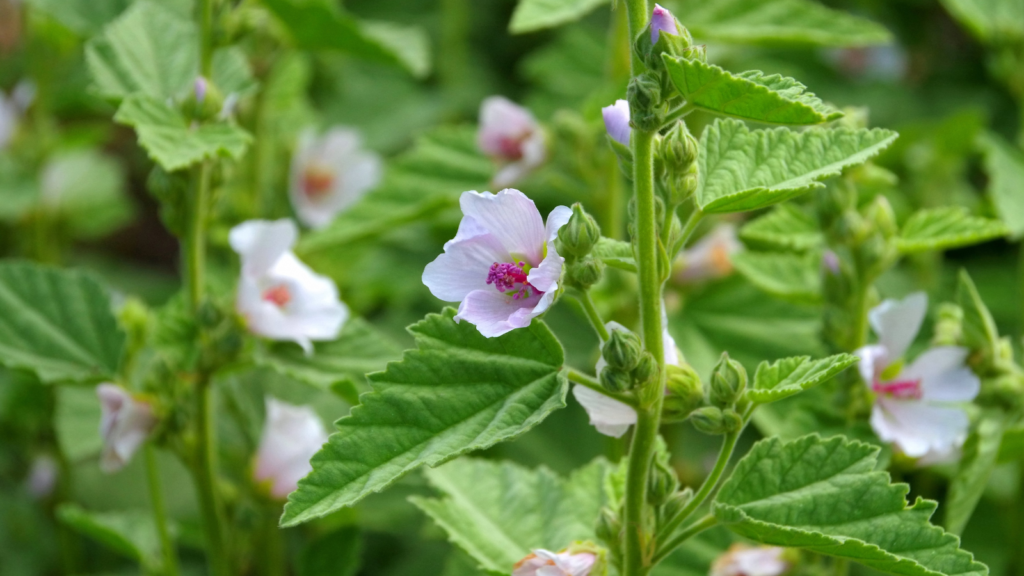Being prepared means more than just stockpiling supplies. It’s about cultivating knowledge and resources that can sustain you in any situation. One of the most valuable skills I’ve developed is growing my own medicinal plants. I’m a master herbalist who has studied extensively, and the plants that I’ve chosen here are those that are easy to grow pretty much anywhere and let you produce useful remedies when old-world medical supplies are unavailable.
If medical assistance is available, obviously, take it. But in a post-collapse world, healthcare will be extremely difficult if not impossible to access. So growing plants that you can use to make simple and effective remedies for minor ailments is an important and super-useful skill.
Whether you’re dealing with a minor scrape or a more serious ailment, having these plants at your fingertips can make all the difference. Grow these or find them wild. Familiarize yourself with each one and how you can use it in times of need.
Echinacea

Echinacea, also known as coneflower, is a powerhouse when it comes to boosting the immune system. I’ve found it particularly effective in fighting off colds and flu. It’s easy to grow and its beautiful purple flowers make it a great addition to any garden. Echinacea can be used fresh or dried, and is often made into teas or tinctures.
Chamomile

Chamomile is my go-to plant for promoting relaxation and aiding sleep. Its gentle sedative effects can help calm nerves and reduce anxiety. I often brew a cup of chamomile tea before bed to ensure a good night’s rest. It’s also great for soothing upset stomachs and reducing inflammation.
Aloe Vera

No homestead should be without aloe vera. This succulent is incredibly easy to grow, even indoors, and has amazing healing properties. I use it primarily for burns, cuts, and skin irritations. The gel inside the leaves provides instant relief and promotes faster healing. It’s also great for soothing sunburns.
Yarrow

Yarrow is a versatile medicinal plant that I always keep on hand. It’s excellent for stopping bleeding and promoting blood clotting. I’ve used it countless times for minor cuts and scrapes. Yarrow also has anti-inflammatory properties and can help reduce fevers. But it’s crucial that you can tell the difference between yarrow and poison hemlock. They look similar to the untrained eye, so if you’re a beginner, I strongly recommend growing yarrow from seed and labelling it rather than foraging for it.
Peppermint

Peppermint is more than just a tasty herb. I’ve found it incredibly useful for digestive issues like nausea and indigestion. It’s also great for relieving headaches and clearing sinuses. Peppermint is easy to grow and spreads quickly, so be sure to contain it if you don’t want it taking over your garden. It’s also awesome for repelling pests like mosquitoes, spiders, and ants.
Lavender

Lavender is renowned for its calming properties, and I can attest to its effectiveness. I often use it to reduce stress and promote relaxation. It’s also great for treating minor burns and insect bites. The fragrant flowers can be dried and used in sachets to repel moths and freshen linens.
Calendula

Calendula, or pot marigold, is a must-have for skin care. I use it to make salves for treating minor wounds, burns, and rashes. It has powerful anti-inflammatory and antimicrobial properties. The bright orange flowers are also edible and make a colorful addition to salads.
St. John’s Wort

St. John’s Wort has been a game-changer for me in managing mild depression and anxiety. It’s also effective for nerve pain and healing wounds. However, it’s important to note that it can interact with certain medications, so always consult a healthcare professional before use.
Lemon Balm

Lemon balm is a member of the mint family that I love for its calming effects. It’s great for reducing stress, aiding focus, and promoting better sleep. I also use it to soothe upset stomachs and relieve headaches. The leaves make a delicious and refreshing tea.
Garlic

While most people think of garlic as a culinary herb, it’s also a powerful medicinal plant. I always have plenty growing in my garden for its immune-boosting and antibacterial properties. It’s particularly effective in fighting off colds and flu. Fresh garlic can also be used topically to treat fungal infections. Garlic is one of my all-time favorite plants as it’s so incredibly good for us, and it can be used for so many different ailments. The alicin in garlic is utterly fascinating and is being used by some medical professionals to help treat conventional antibiotic-resistant superbugs.
Ginger

Ginger is a warming herb that I find invaluable for treating nausea and digestive issues. It’s also great for reducing inflammation and boosting circulation. I grow it in pots that I can bring indoors during the winter months. Fresh ginger tea is my go-to remedy for upset stomachs and motion sickness. I make myself a ginger tea whenever I have a headache coming on, too.
Rosemary

Rosemary is more than just a delicious culinary herb. I use it to improve memory and concentration. It’s also great for boosting circulation and relieving muscle pain.
Sage

Sage has been a staple in my medicinal garden for years. It’s excellent for soothing sore throats, toothache, and respiratory issues. I often make a sage gargle for sore throats. It’s also known for its memory-enhancing properties and can be used to ease menopausal symptoms.
Thyme

Thyme is a powerful antiviral and antibacterial herb that I always have on hand. It’s particularly effective for respiratory issues like coughs. It’s also great for boosting the immune system.
Elderberry

Elderberry is my secret weapon against colds and flu. The berries are packed with immune-boosting compounds. I make elderberry syrup every fall to help ward off winter illnesses. The flowers can also be used to make a tea that helps reduce fevers. It grows wild everywhere around me and is easy to forage, but it’s important to remember that the stems and unripe berries are poisonous and can cause digestive distress, so only ever make syrup from the ripe berries, and take the time to remove all the stems.
Mullein

Mullein is a tall, stately plant that I grow for its lung-healing properties. The leaves can be smoked or made into a tea to help treat respiratory issues. It’s been used for centuries to help with asthma and bronchitis symptoms. The flowers can be infused in oil to make ear drops for earache, too.
Comfrey

Comfrey, also known as knitbone, is excellent for treating sprains, bruises, and broken bones. I use it to make healing salves and poultices. However, it’s important to note that comfrey should only be used externally, as internal use can cause liver damage.
Plantain

Plantain is a common “weed” that I encourage to grow in my yard. It’s excellent for treating insect bites and stings. I often chew up a leaf and apply it directly to bug bites for instant relief. It’s also great for drawing out splinters and treating minor wounds.
Cayenne Pepper

Cayenne pepper is more than just a spice. I grow it for its pain-relieving properties. It’s excellent for relieving arthritis pain and improving circulation. I make a cayenne salve for sore muscles that’s so soothing after a long day’s work. It’s also great for stopping bleeding in an emergency.
Valerian

Valerian is my go-to herb for promoting deep, restful sleep. The root can be made into a tea or tincture. I’ve found it particularly effective for insomnia and anxiety. However, it can cause drowsiness, so it’s best used before bed. The cats and dogs also adore this herb.
Feverfew

Feverfew is my go-to for reducing the frequency of migraines and at the onset of a headache for quick relief. It’s also effective for reducing fevers, as its name suggests. The leaves can be dried and used to make tea.
Dandelion

Many people consider dandelions a nuisance, but I see them as a valuable medicinal plant. The roots are excellent for liver health, while the leaves are a natural diuretic. I often add the young leaves to salads or brew them into a tea. The flowers can be used to make a healing salve.
Marshmallow Root

Marshmallow root is my go-to herb for soothing irritated mucous membranes. I use it for sore throats, upset stomachs, and urinary tract infections. The root can be made into a tea or syrup. It’s also great for dry coughs.
Nettle

Stinging nettle might seem intimidating, but it’s actually a nutritious and medicinal powerhouse that’s full or iron and chlorophyll. I harvest the leaves (wearing gloves!) to make nutrient-rich teas and soups. It’s excellent for allergies and reducing inflammation. And there’s a lot of exciting research around nettles for maintaining healthy blood pressure, blood-lipid levels, and kidney and gallbladder health.

